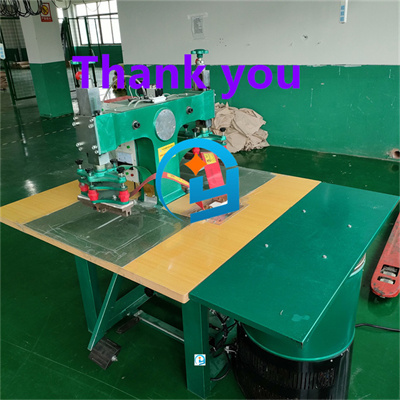
High-frequency high-frequency machine maintenance technology to solve
High-frequency high-frequency machine repair technology solutions involve a number of aspects, the following are some common failures and their repair methods, designed to help technicians quickly locate the problem and take appropriate measures:
First, high-frequency fire problem
Cause analysis:
The resonant cavity (oscillation barrel) is too dusty, resulting in sparks.
Debris in the gap between the resonant cavity and the outer barrel.
Solution:
Clean the dust in the resonant cavity (oscillation barrel).
Check and remove debris from the gap between the resonant cavity and the outer barrel.
Second, high-frequency wave material bonding is not strong
Cause analysis:
Unstable high frequency output or insufficient power.
Mould design is unreasonable or badly worn.
Solution:
Check the working status of the high frequency generator to ensure stable output.
Adjust the mould design or replace the mould parts that are badly worn.
Third, high-frequency machine start over-current problem
Cause analysis:
The resonant cavity is protected from excessive short circuit caused by debris.
Component damage, such as pipe short circuit, rectifier diode damage, high voltage transformer damage.

Solution:
Clean the debris in the resonant cavity to ensure there is no short circuit.
Check and replace damaged components, such as rectifier diodes, high voltage transformers, etc.
Fourth, high-frequency barrel sparking problem
Cause analysis:
The spark protection sensitivity inside the resonant cavity is set too high.
The heating tube leaks or the connecting cable insulation is damaged.
Solution:
Adjust the sensitivity setting of spark protection.
Check the insulation layer of the heating tube and connecting cable, and replace the damaged parts in time.
Fifth, the vacuum tube vacuum tube failure
Cause analysis:
Electron tube aging or damage.
High voltage transformer failure.
Solution:
Use a multimeter to detect the cathode, anode and gate voltage of the electron tube to determine whether the electron tube is damaged, and replace it with a new tube if necessary.
Check the working status of the high-voltage transformer, if any failure to repair or replace in time.
Maintenance precautions:
Safety first: in the maintenance process, be sure to ensure that the equipment has been disconnected and in a safe state to avoid electric shock and other hazards.
Professional tools: the use of professional maintenance tools and equipment for testing and repair, to ensure the quality of maintenance.
Step-by-step investigation: according to the failure phenomenon step-by-step investigation of the possible causes, to avoid blind replacement of parts causing unnecessary waste.
Record the maintenance process: Record in detail the inspection, testing and replacement of parts in the maintenance process, to provide reference for subsequent maintenance.
Through the above methods, you can effectively solve the common faults encountered in the use of high-frequency high-frequency machine, to ensure the normal operation of the equipment and production efficiency.




